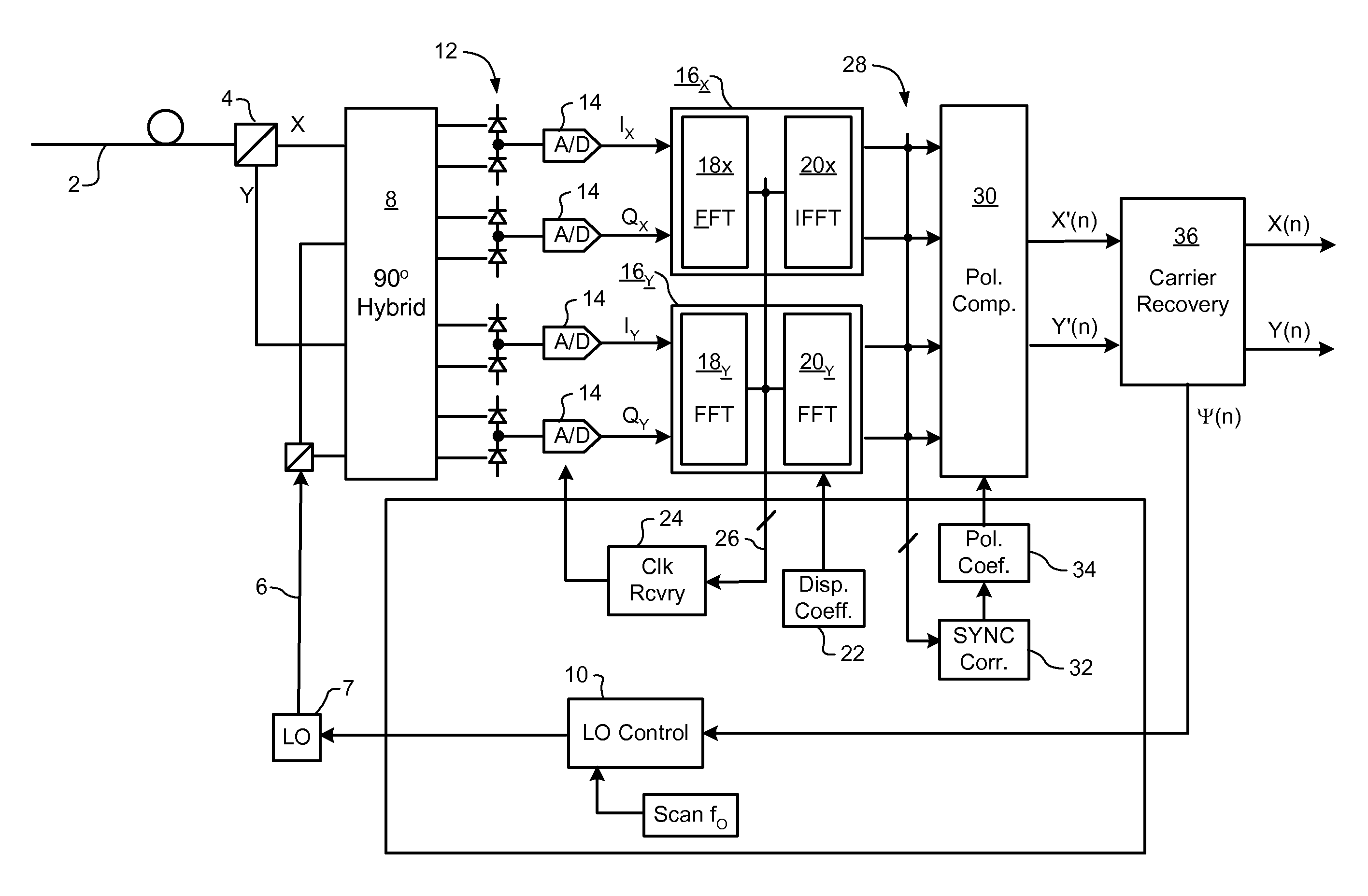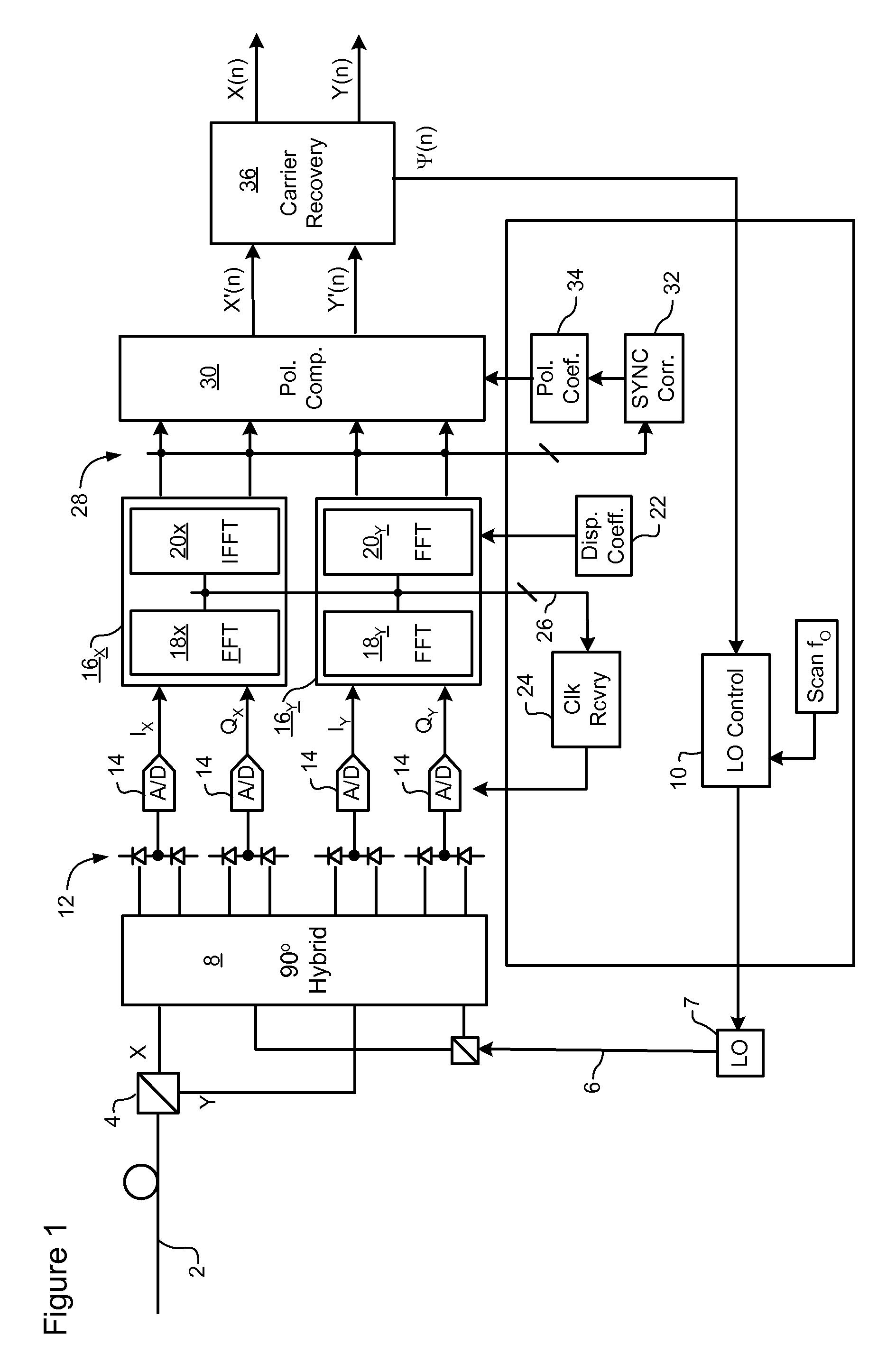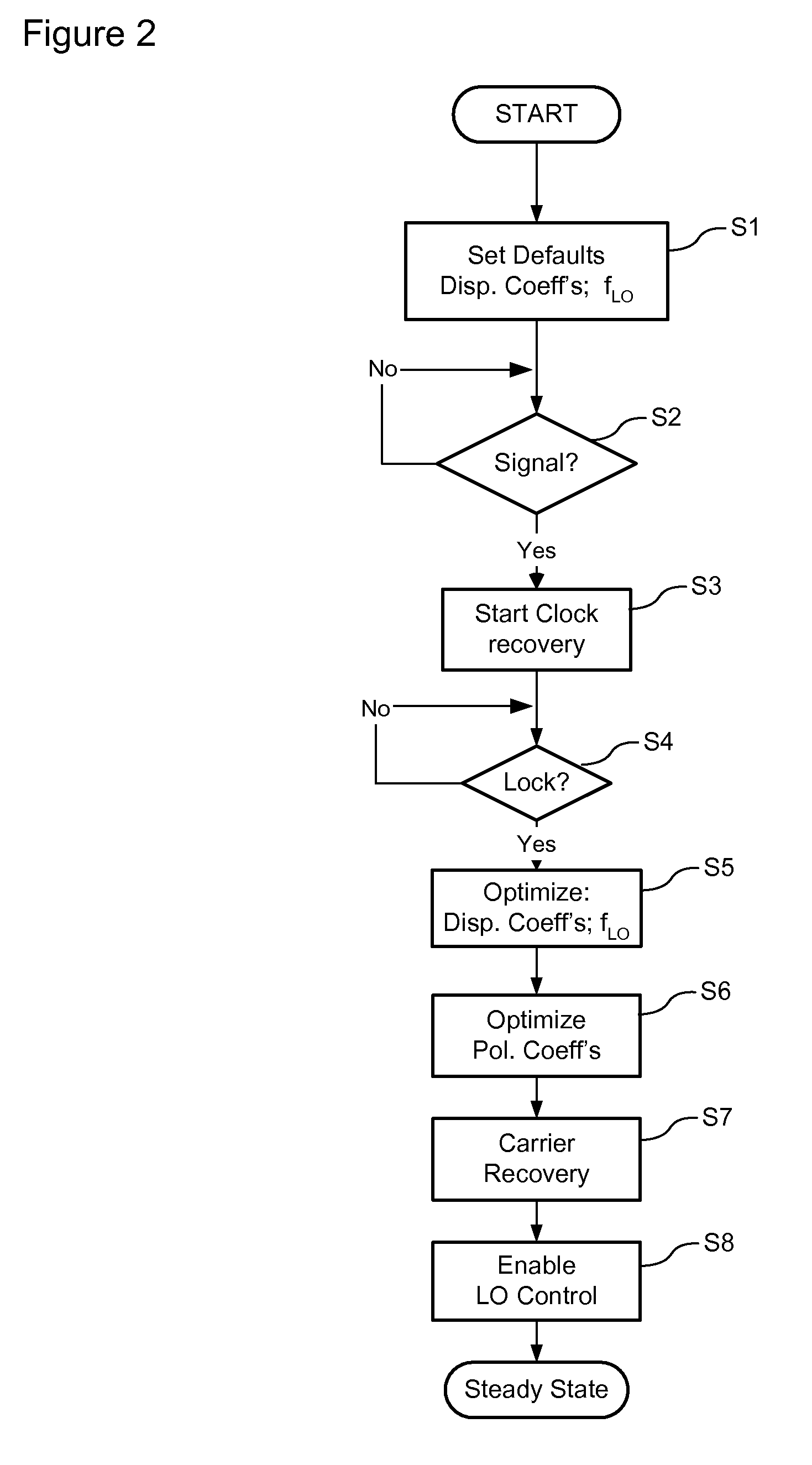Signal acquisition in a coherent optical receiver
a technology of optical receiver and signal acquisition, applied in the field of optical communication networks, can solve the problems of erroneous data detection, inability to successfully deploy in “real-world” installed communications networks, and disadvantages of receivers based on coherent detection techniques, and achieve steady-state operation and reliable signal acquisition
- Summary
- Abstract
- Description
- Claims
- Application Information
AI Technical Summary
Benefits of technology
Problems solved by technology
Method used
Image
Examples
Embodiment Construction
[0026]The present invention provides methods and techniques that enable reliable signal acquisition and stabilization to steady-state operation of a coherent receiver unit of an optical communications network. Embodiments of the present invention are described below, by way of example only, with reference to FIGS. 1-10.
[0027]In general, the present invention provides methods in which a multi-bit sample stream of a received optical signal is digitally processed to find receiver parameters which compensate link impairments with sufficient accuracy that any residual distortions are within a pull-in range of “steady-state” adaptation loops of the receiver. As a result, signal acquisition and steady-state operation of the receiver can be achieved with a high degree of reliability, even in the presence of moderate to severely distorted optical signals.
[0028]FIG. 1 schematically illustrates a representative coherent optical receiver in which methods of the present invention may be implemen...
PUM
 Login to View More
Login to View More Abstract
Description
Claims
Application Information
 Login to View More
Login to View More - R&D
- Intellectual Property
- Life Sciences
- Materials
- Tech Scout
- Unparalleled Data Quality
- Higher Quality Content
- 60% Fewer Hallucinations
Browse by: Latest US Patents, China's latest patents, Technical Efficacy Thesaurus, Application Domain, Technology Topic, Popular Technical Reports.
© 2025 PatSnap. All rights reserved.Legal|Privacy policy|Modern Slavery Act Transparency Statement|Sitemap|About US| Contact US: help@patsnap.com



